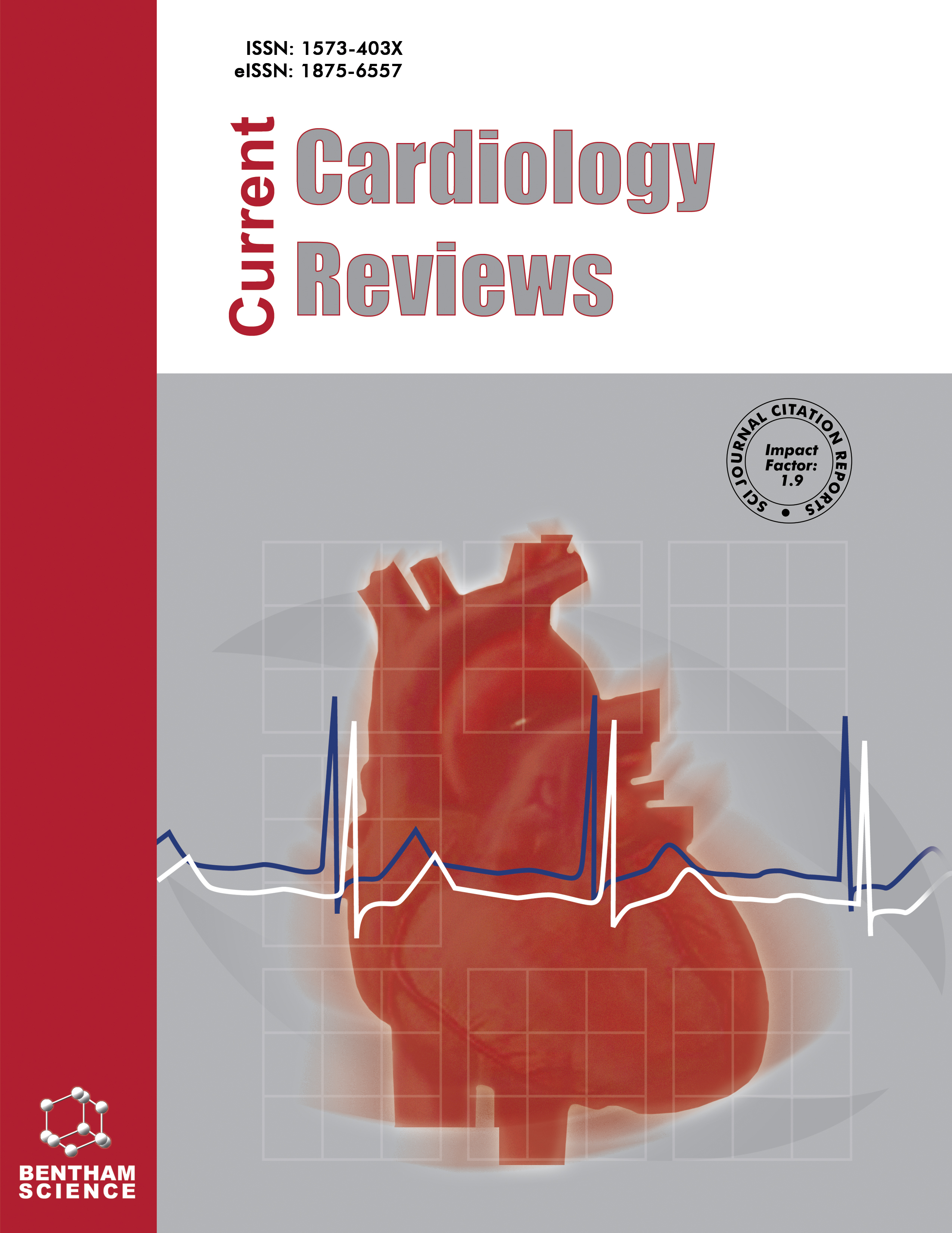- Home
- A-Z Publications
- Current Cardiology Reviews
- Previous Issues
- Volume 18, Issue 3, 2022
Current Cardiology Reviews - Volume 18, Issue 3, 2022
Volume 18, Issue 3, 2022
-
-
Highlighting Exosomes’ Function in Cardiovascular Diseases
More LessAuthors: Sidhi Laksono, Budhi Setianto, Ananta S. Prawara and Bambang DwiputraExosomes, as one of the extracellular vesicles’ subgroups, played an important role in the cell to cell communication. The cargos and surface protein of exosomes have been known to affect the cardiovascular system both positively and negatively in chronic heart failure, ischemic heart disease, and atherosclerosis. There have been several exosomes that emerged as potential diagnostic and prognostic markers in cardio Read More
-
-
-
Sacubitril/Valsartan: A New Dawn has Begun! A Revisited Review
More LessAuthors: Mahmoud Abdelnabi, Yehia Saleh, Abdallah Almaghraby, Hany Girgis and Fady GergesHeart Failure (HF) is among the major causes of global morbidity as well as mortality. Increased prevalence, frequent and prolonged hospitalization, rehospitalization, long-term consumption of healthcare resources, absenteeism, and death upsurge the economic burden linked to HF. For decades, Angiotensin-Converting Enzyme Inhibitors (ACEIs), Angiotensin II Receptor Blockers (ARBs), Beta-Blockers (BBs), and mineralocorticoid re Read More
-
-
-
Pacemaker Induced Cardiomyopathy: An Overview of Current Literature
More LessPacemaker Induced Cardiomyopathy (PICM) is commonly defined as a reduction in left ventricular (LV) function in the setting of right ventricular (RV) pacing. This condition may be associated with the onset of clinical heart failure in those affected. Recent studies have focused on potential methods of identifying patients at risk of this condition, in addition to hypothesizing the most efficacious ways to manage these patients. Read More
-
-
-
The Fundamental Basis of Palpitations: A Neurocardiology Approach
More LessAuthors: Joshua W. Kandiah, Daniel M. Blumberger and Simon W. RabkinBackground and Objective: Palpitations are a common symptom that may indicate cardiac arrhythmias, be a somatic complaint in anxiety disorders, and can be present in patients without either condition. The objective of this review was to explore the pathways and fundamental mechanisms through which individuals appreciate palpitations. Observations: Cardiac afferents provide beat-to-beat sensory informatio Read More
-
-
-
Biomarkers in Acute Heart Failure Syndromes: An Update
More LessHeart failure is one of the leading healthcare problems in the world. Clinical data lacks sensitivity and specificity in the diagnosis of heart failure. Laboratory biomarkers are a non-invasive method of assessing suspected decompensated heart failure. Biomarkers such as natriuretic peptides have shown promising results in the management of heart failure. The literature does not provide comprehensive guidance in the utiliza Read More
-
-
-
The Emergence of Artificial Intelligence in Cardiology: Current and Future Applications
More LessAuthors: Prashanth Kulkarni, Manjappa Mahadevappa and Srikar ChilakamarriArtificial intelligence technology is emerging as a promising entity in cardiovascular medicine, potentially improving diagnosis and patient care. In this article, we review the literature on artificial intelligence and its utility in cardiology. We provide a detailed description of concepts of artificial intelligence tools like machine learning, deep learning, and cognitive computing. This review discusses the current evidence, application, Read More
-
-
-
Concise Review of the Rationale for Pulmonary Embolism Treatment and Endovascular Device Therapies
More LessAuthors: Caleb Chiang and Steve AttanasioIn the ever-changing landscape of device therapy for pulmonary embolism, it is important to understand the rationale behind the ongoing explosion in the development of new device therapies. There needs to be an in-depth understanding of risk stratification in pulmonary embolism and indications for therapy. Selecting the ideal device for a particular pulmonary embolism subset remains elusive and poorly defined. Knowl Read More
-
-
-
Efficacy and Complications of Subcutaneous versus Conventional Cardioverter Defibrillators: A Systematic Review and Meta-analysis
More LessBackground/Objectives: Implantable cardioverter defibrillators are used to prevent sudden cardiac death. The subcutaneous implantable cardioverter-defibrillator was newly developed to overcome the limitations of the conventional implantable cardioverter defibrillator-transvenous device. The subcutaneous implantable cardioverter defibrillator is indicated for young patients with heart disease, congenital heart defe Read More
-
Volumes & issues
-
Volume 21 (2025)
-
Volume 20 (2024)
-
Volume 19 (2023)
-
Volume 18 (2022)
-
Volume 17 (2021)
-
Volume 16 (2020)
-
Volume 15 (2019)
-
Volume 14 (2018)
-
Volume 13 (2017)
-
Volume 12 (2016)
-
Volume 11 (2015)
-
Volume 10 (2014)
-
Volume 9 (2013)
-
Volume 8 (2012)
-
Volume 7 (2011)
-
Volume 6 (2010)
-
Volume 5 (2009)
-
Volume 4 (2008)
-
Volume 3 (2007)
-
Volume 2 (2006)
-
Volume 1 (2005)
Most Read This Month
Article
content/journals/ccr
Journal
10
5
false
en


